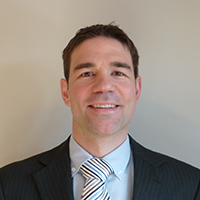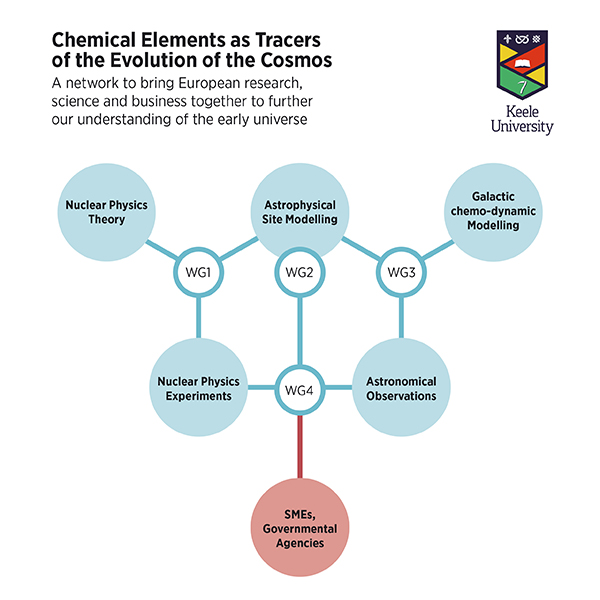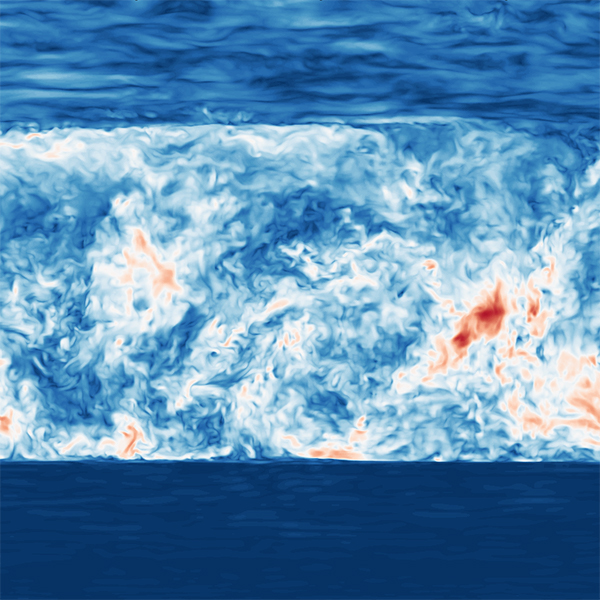Keele University leads European project to trace the evolution of the universe

Pictured, Dr Raphael Hirschi, Lead Proposer of the COST Action
A researcher from Keele University has been successful in winning a European Cooperation in Science and Technology (COST) Action to lead a multidisciplinary, European network to trace the evolution of the universe.
Dr Raphael Hirschi, an Associate Professor in Astrophysics at Keele University, is the lead proposer of the four year Action, which will focus on the evolution of the cosmos, via the chemical fingerprints left by the nuclear reactions in stars.
The Action, supported by 37 secondary proposers throughout 27 European countries, including Dr Alison Laird from York University, is titled ‘Chemical Elements as Tracers of the Evolution of the Cosmos’, and will provide funding to bring European research, science and business together to further our understanding of the early universe.
Dr Hirschi, who has coordinated similar research networks at Keele University, commented: “Our overall goal is to answer open questions we still have about the early stages of the universe, and to do this we must take a multidisciplinary approach and work together, specifically in nuclear physics and astrophysics, in a coordinated effort.”
Dr Hirschi’s proposal highlights that current research in astronomy, astrophysics and nuclear physics is disjointed - therefore, the aim of the Action is to bring those research communities together, to build interdisciplinary bridges across Europe, and to link research with businesses who can provide the technological tools required to exploit the research outputs.
The Action will aim to maximise the scientific and innovative return of huge investments already made in experimental facilities located across Europe, including GANIL in France, the first underground laboratory for nuclear astrophysics LUNA in Italy, and the accelerator facility FAIR being constructed at GSI in Germany.

The above image shows how the networks will bring together academics, experiment facilities, Small and Medium size Enterprises (SMEs), and astronomical observations from the European Space Agency's Gaia mission, European Southern Observatory's Very Large Telescope, and the Isaac Newton Group's William Herschel Telescope, amongst others.
Approved by the COST Committee of Senior Officials on 24 October 2016, the Action is one of 25 approved out of 478 eligible proposals collected earlier this year, and one of only 4 Actions from the UK to be selected.
The COST Action will provide funding for networking activities, including workshops, training schools and short-term scientific missions for 4 years, and will also train a new generation of European scientists, providing interdisciplinary expertise and knowledge-transfer skills.
Dr Hirschi added:
“I am really excited about working with other academics but also businesses - this Action will open big opportunities for businesses. It’s exciting to help spread knowledge across European countries that may not have access to this type of research - it is a great chance to build bridges between the academic world and industry leaders.”
Dr Hirschi was asked to lead the COST Action proposal due to his record of successful projects including BRIDGCE, a UK network established to bridge the disciplines involved in the study of the origin of the elements. Dr Hirschi also leads on two other projects at Keele, which will help feed into the COST Action, ERC-funded SHYNE which focuses on 3D hydrodynamics and 1D stellar evolution simulations, and NuGrid, which develops and maintains tools for large scale post-processing nucleosynthesis simulations.

The above picture is a snapshot of the velocity magnitude in a three dimensional simulation of the interior (carbon-burning shell) of massive stars, showing the turbulence in the central convective zone and gravity waves in the top and bottom stable regions.
Dr Hirschi said: “This is an amazing opportunity and it’s the biggest project I have run so far. It’s a big step for me and I’m still surprised to be leading this. I’m very excited to start the project.”
For more information about Dr Hirschi’s work visit http://www.astro.keele.ac.uk/~hirschi/ or for details on Keele University’s Physics and Astrophysics courses visit http://www.keele.ac.uk/physics/.
About COST
COST (European Cooperation in Science and Technology) is a pan-European intergovernmental framework. Its mission is to enable breakthrough scientific and technological developments leading to new concepts and products, and thereby contribute to strengthening Europe’s research and innovation capacities.
It allows researchers, engineers and scholars to jointly develop their own ideas and take new initiatives across all fields of science and technology, while promoting multi- and interdisciplinary approaches.
COST aims to foster a better integration of less research intensive countries to the knowledge hubs of the European Research Area.



